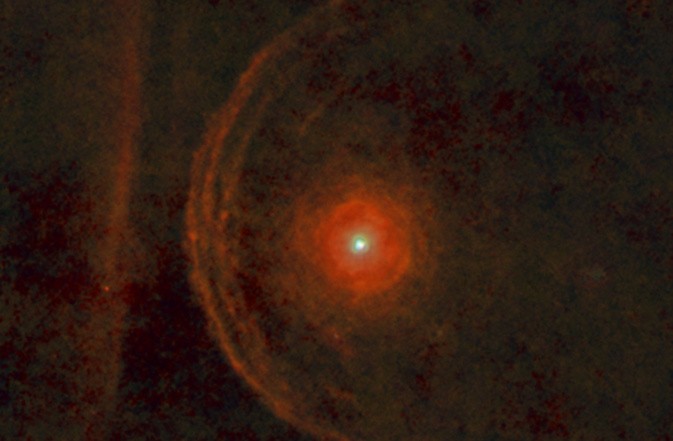Researchers claimed that Betelgeuse, a brilliant star visible to the naked eye in the shoulder of Orion had a huge decrease in brightness due to a black star spot that produced a drop in surface temperature.
Science Magazine said that Betelgeuse, the 10th brightest star in the sky and part of the Orion constellation, is a supergiant that is expected to explode after its life cycle in 100,000 years.
Although the brilliant reddish star is a variable, its brightness fluctuates. It lost 60% of its brightness from October 2019 to March 2020. Astronomers were perplexed by the unusual light shift, which was the most dramatic in 50 years.

Scientists ruled out the possibility of having a supernova when Betelgeuse began to brighten again in April 2020. Astronomers set out to develop a new explanation to understand the strange phenomenon.
As recorded by the European Southern Observatory's (ESO) Very Large Telescope (VLT) and Ultraviolet observations by the Hubble Space Telescope, the Great Dimming has spawned a slew of ideas to explain the phenomena.
Hubble observations show that the unexpected dimming of supergiant star #Betelgeuse was probably caused by an immense amount of hot plasma ejected into space. The plasma cooled, forming a dust cloud that blocked starlight coming from Betelgeuse’s surface: https://t.co/PwFEGo4Nvx pic.twitter.com/GuTOrop7me
— Hubble Space Telescope (@HubbleTelescope) August 13, 2020
They included anything from the pre-phase of a supernova explosion (near the conclusion of a red supergiant's life cycle) to a massive cloud of dust and gas traveling between the Earth and Betelgeuse, as well as changes in the star's photosphere.
The mystery dimming was caused by a dusty curtain obscuring the star, researchers said. Experts published their study titled "Spectroscopic Evidence for a Large Spot on the Dimming Betelgeuse," in Nature Communications.
Mysterious Temperature Drop
The recent research headed by Prof. Zhao Gang of the Chinese Academy of Sciences' National Astronomical Observatories (NAOC) offers new information on the nature of the unexplained dimming.
The researchers looked at Betelgeuse's high-resolution near-infrared spectra taken at Shandong University's Weihai Observatory from January to April 2020, Daily Mail said. The dimming and post-dimming stages were covered at this time. Betelgeuse is the biggest light in the night sky in the near-infrared wavelength range.
The researchers devised a unique method to determine the effective temperatures of red supergiants by searching for particular compounds in their atmosphere.
According to Phys.org, the effective temperature of Betelgeuse on January 31, 2020, at its lowest brightness, was 3476 Kelvins. The temperature was 3646 Kelvins on April 6, when it recovered its brilliance. The star's total brightness was lowered as the temperature dropped, making it look less brilliant throughout the fading period.
It was claimed that a huge black star spot on Betelgeuse's surface may have precipitated the temperature dip. This is a common occurrence among red supergiants. Such black patches might be caused by convective fluxes or cold convective cells, commonly thought to exist in such stars.
Prof. Zhao Gang said in a Eurekalert report that the discoveries provide light on the characteristics of red supergiant stars, which are the primary contributors to the enrichment of heavy metals in the Universe.
RELATED ARTICLE : Red Supergiant Star Betelgeuse Great Dimming Mystery Solved, Here's Why It Gets Dark
Check out more news and information on Space in Science Times.
© 2025 ScienceTimes.com All rights reserved. Do not reproduce without permission. The window to the world of Science Times.












